The Games That Defined The Sega Master System
It's not Sega's most famous console, but the games that define the Master System showcase the hardware's unique legacy.

The Sega Master System is a peculiar part of video game history. It was middling compared to its contemporaries. Not a major success but not the most laughable failure. Not the greatest console of the time but not the worst either. On paper, it was technically superior to the NES, but it was also inferior where it counted (like library and third-party support). A huge step up from the SG-1000, but completely overshadowed by the Sega Genesis.
There was little tangible identity to the Master System. It was the other console you could get, and that was it. It lacked the energy of the NES or the attitude of the Genesis. It was simply run-of-the-mill. Yet…it found life beyond expectations. In its own unorthodox way, it lived on far longer than many realized.
What games truly defined Sega’s second console through the years? Let’s take a look.
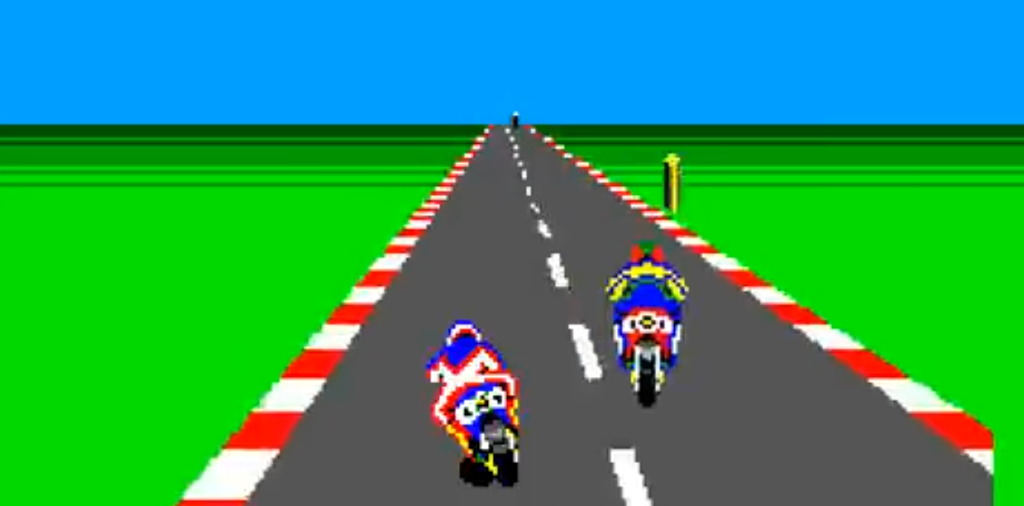
Hang-On (1986)
With Nintendo having a near monopoly on third-party support, Sega did have one big ace up their sleeve: they were godly when it came to arcade releases. All they had to do was take some of their arcade hits that people were already aware of and bring them home, fitting in as much quality as possible. Hang-On was one of their arcade hits at the time. It basically took the blueprint of Outrun but made it about motorcycles. While they already did try porting it to the SG-1000, the Sega Master System offered a nice middle ground between the two versions.
The game is pretty simple, but addictive. You weave through other motorcycles while trying to speed through the winding road without crashing and failing to beat your appointed time. It was a perfect starter game for the system, which is why it was one of the two pack-in games. The other games were either Safari Hunt or Astro Warrior, depending on the bundle. Plus there was Snail Maze, which was built into the Master System itself.
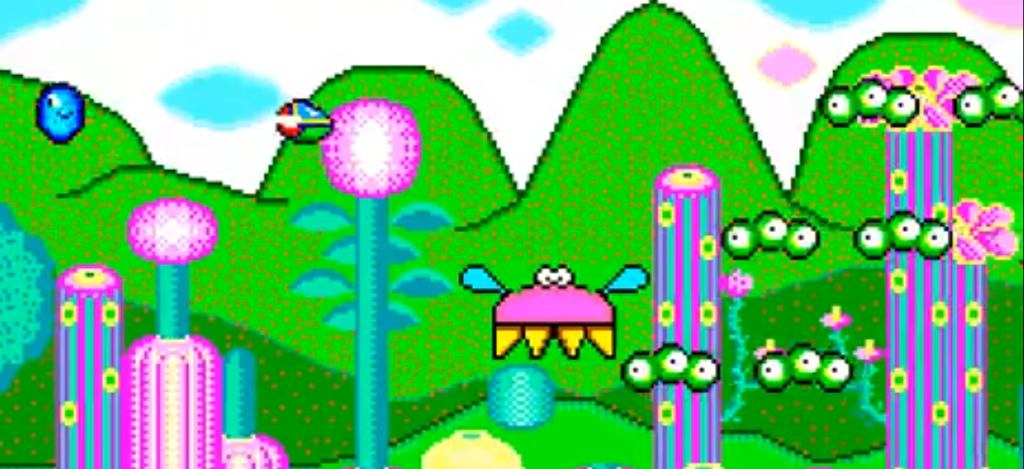
Fantasy Zone (1986)
Something the Master System had over the NES was its rich color palette. Those colors popped off the screen and really made all the difference when more cartoony games were involved. Few games truly show this feast for the eyes better than the early Sega release Fantasy Zone.
In it, you play as Opa-Opa: a sentient spaceship trying to protect its febrile world from equally silly invaders. While it’s a shoot ‘em up, the setup is more about exploration while you blow everything to kingdom come instead of just scrolling endlessly to the right. It is another arcade port, but one of the more accurate ones on the console. It received several sequels, and they only got around to making a Genesis version of the game decades later for the Sega Genesis Mini 2.
It also has one of the most hilariously offbeat endings in any video game where it gets suddenly somber and deadly serious despite this tiny, adorable spaceship thingy being fresh from blowing up a giant snowman.
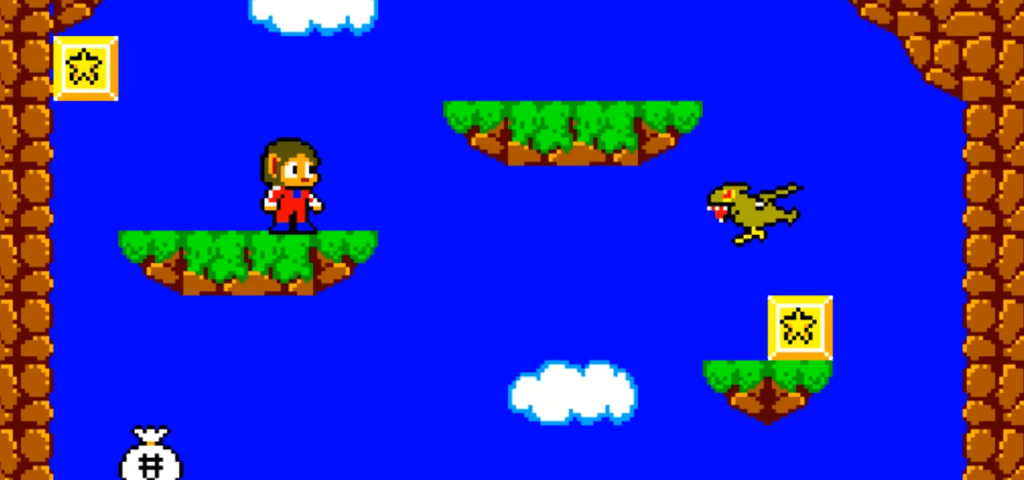
Alex Kidd in Miracle World (1986)
Opa-Opa was a neat character for Sega to play with, but they needed a real mascot if they were going to compete. Someone who could out-Mario Mario. A platformer they could build the console around. Well, the closest they could figure out at the time was a monkey-looking child who was redesigned for US box art as the most generic and ugly child you’ve ever seen.
Alex Kidd started off with Miracle World, where he replaced jumping on heads with punching people and blocks with his gigantic hand. And he is tired of these jokes about it (the first such instance occurred in 1956…). There were other unique platformer mechanics thrown in, plus the occasional game of rock-paper-scissor against bosses.
Before the Blue Blur put them on the right track, Sega tried a handful of games starring Alex Kidd. A couple of these releases were going to be completely unrelated games before they decided to just throw him in there for the sake of familiarity. Ah, the Die Hard effect. Most of them didn’t even play the same, meaning they were trying to build him as a brand instead of just a franchise. Alex and his Ms. Marvel hands faded into obscurity, best represented in an Altered Beast Easter egg where his name appears on a headstone. Weird for them to bury his body in Greece, but whatever.
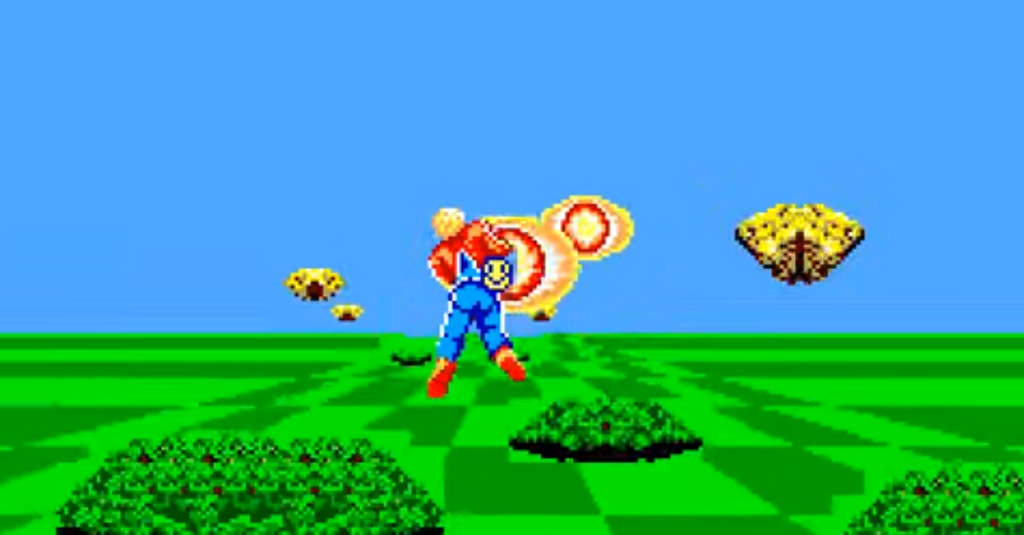
Space Harrier (1986)
In the 80s, Space Harrier might not have been the absolute best arcade game available, but it was the arcadiest. It was that game that you saw, and you immediately knew it was a huge deal. It was premium gaming. You knew that no home console could ever hope to reach visuals or gameplay. Well, the Master System gave it an attempt. All things considered, it did all right!
Considering the graphics and the tricky 3D over-the-shoulder gameplay that comes with flying around the Fantasy Zone (but not the Fantasy Zone from Fantasy Zone, apparently!), this shouldn’t work at all on an 8-bit console, but the Master System gives it its all. Many consoles have their share of games that push the hardware to the limit, but they usually come towards the end of their lifespan. Not this one. Sure, the hit detection leaves a lot to be desired and it gets glitchy, but if you had this in the 80s, you were not going to feel disappointed.
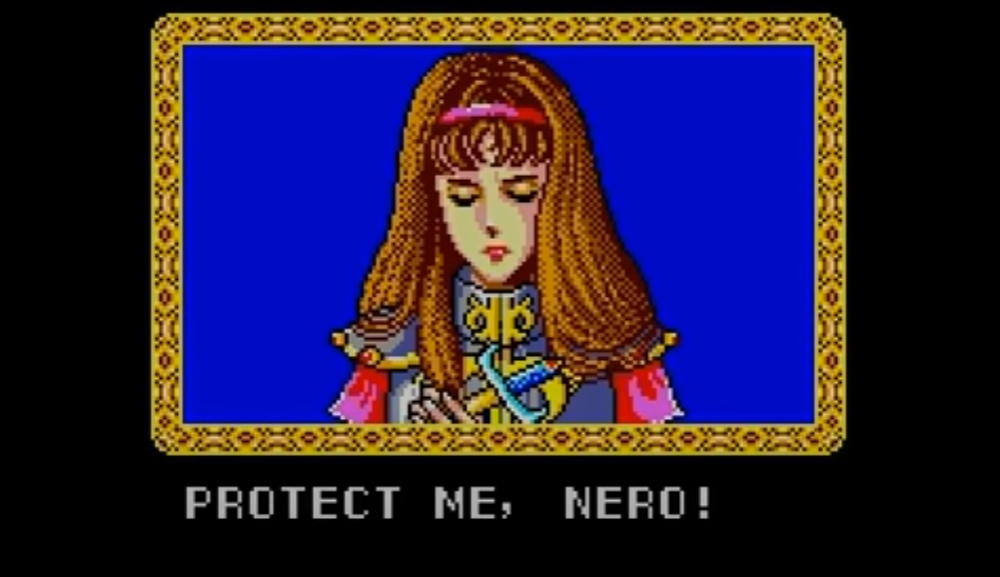
Phantasy Star (1987)
Phantasy Star is part of the holy trinity of early, revolutionary RPG games that laid the groundwork for the future of the genre. It came out a year after Dragon Quest and mere days after Final Fantasy. While those two games were hurt by limited action and simple visuals, Phantasy Star was on another level. The differences between NES and Master System were never more apparent than watching the jaw-dropping atmosphere and sprite work at work here.
Taking place in a sci-fi/fantasy hybrid setting, you play as Alis: a warrior woman out to overthrow the space tyrant responsible for her brother’s death. Putting together a party of adventurers, she flies to various planets and does a whole lot of cool-looking dungeon crawling. Not only are these underground mazes animated incredibly smoothly, but the enemies and their attacks also look brilliant. It’s an amazing total package that still holds up today.
Something really funny about this game is that Sega didn’t know how to really market it in America. Their big idea was to do a commercial for the game Thunder Blade but make a couple of references to Phantasy Star being on the way and insisting it was a big deal. Not a single piece of footage or context. Just a very young Stephen Dorff saying, “Wait until they see Phantasy Star,” while his friends excitedly play Thunder Blade behind him. And one of his friends was Kevin Connolly!
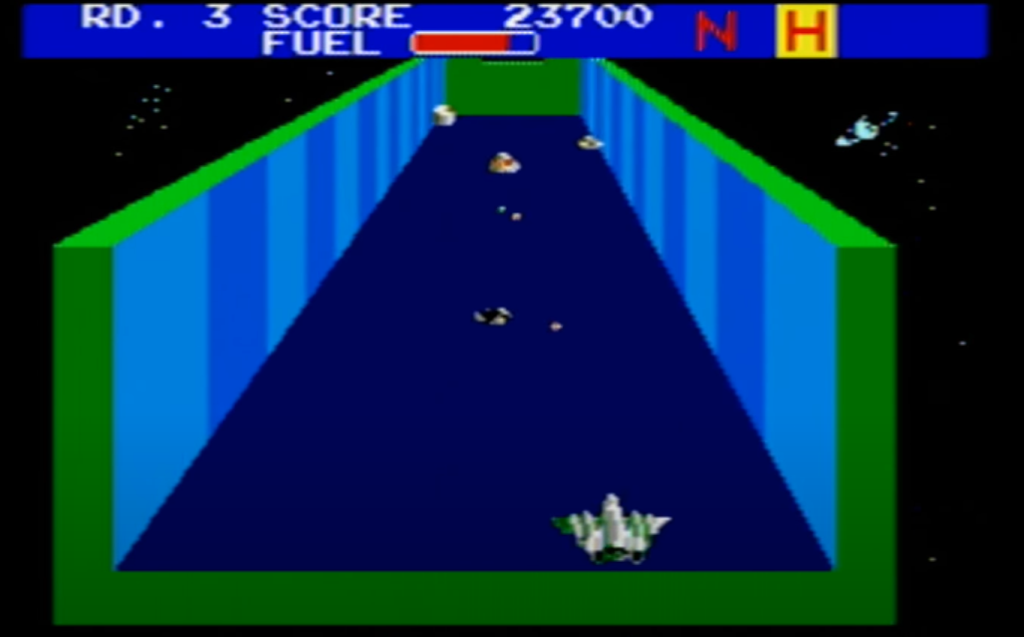
Zaxxon 3D (1987)
Outside of the Light Phaser, the console’s obligatory light gun, the one notable accessory for the Master System was the SegaScope 3D glasses. This attachment only had a handful of games to its name, all suffering half the framerate to make the device work correctly. Some of the games were just rereleases with the technology added in, like Outrun and Space Harrier. Then you get Zaxxon 3D.
The game is (big surprise) based on an arcade shoot ‘em up game from years earlier, but with 3D effects to play with its unique visual angle. Enemies and trench walls would come at you in a way that truly gave the illusion of depth. If you didn’t have the 3D glasses, or even a model of the console that had a port for it, you could at least set the game to 2D, but that wasn’t nearly as fun. It was just generic and hard to judge where to shoot.
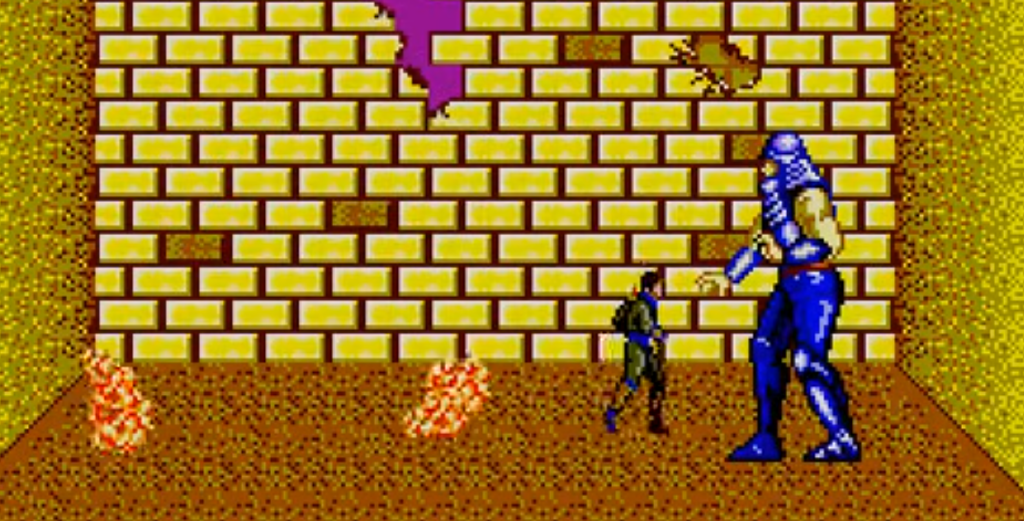
Shinobi (1988)
Shinobi is yet another arcade game brought home, but this one felt a little different due to the timing of its release.
Unlike those other games, this one came out in a sweet spot where the Master System was a couple of years old and the Genesis was a couple of years off. It felt like an arcade game made with the knowledge that it was going to be a selling point for the Master System down the line, as it was still the best place to see attempts at porting arcade hits. Seeing the shuriken-tossing minigame on commercials really gave you the idea that this whole thing was next level.
Shinobi has you play as a ninja jumping around and fighting enemies, all while rescuing kidnapped children and fighting some ridiculous bosses (with the series being known for some designs knee-deep in copyright infringement). The Master System changed some stuff up, like making the child rescues less obligatory and giving you a life bar instead of dealing out instant kills. It’s a lot slower, especially when jumping up and down platforms, but it was still swell for the time.
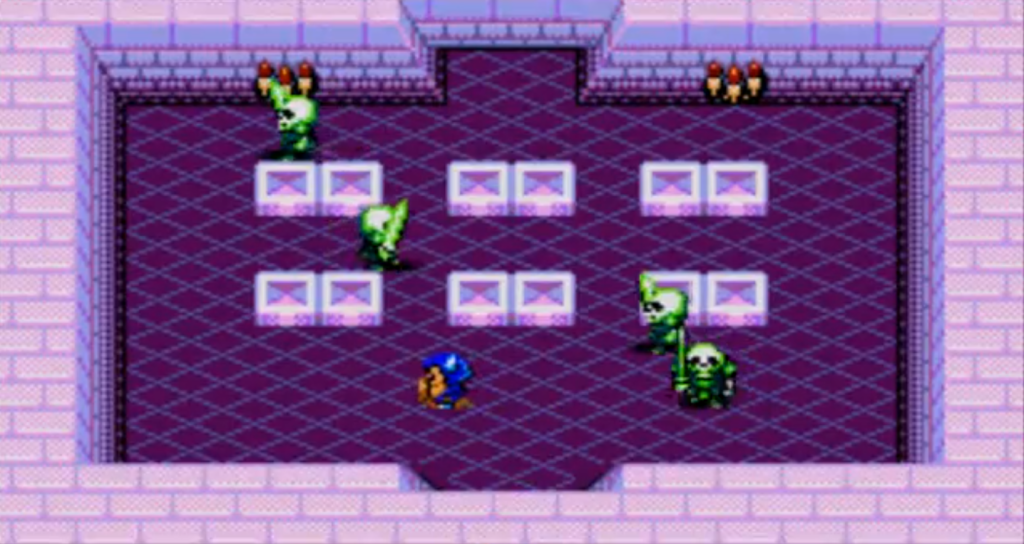
Golden Axe Warrior (1991)
In 1989, Bomber Raid was released. While the game isn’t worth talking about on its own, it’s still notable for being the last Master System release in Japan. Yes, the home team was calling it quits. That meant North America would spend a couple of years getting titles that would never set foot in Japan. Kind of nuts, right? As we’ll get into in a second, that’s just the tip of the iceberg.
Golden Axe Warrior was NOT an arcade port. Don’t be mistaken, they did try to port Golden Axe to the console a year earlier to very mixed results, but then they tried to do something new with the franchise. Well, not so much “new” as “new for Golden Axe.” They took the world of the game and made a very blatant Legend of Zelda clone. That said, it is still a high-quality clone and feels like a kickass sequel that accidentally ended up in the wrong continuity. It may not be the Golden Axe fans were used to, but it’s definitely a hidden gem on the Master System.
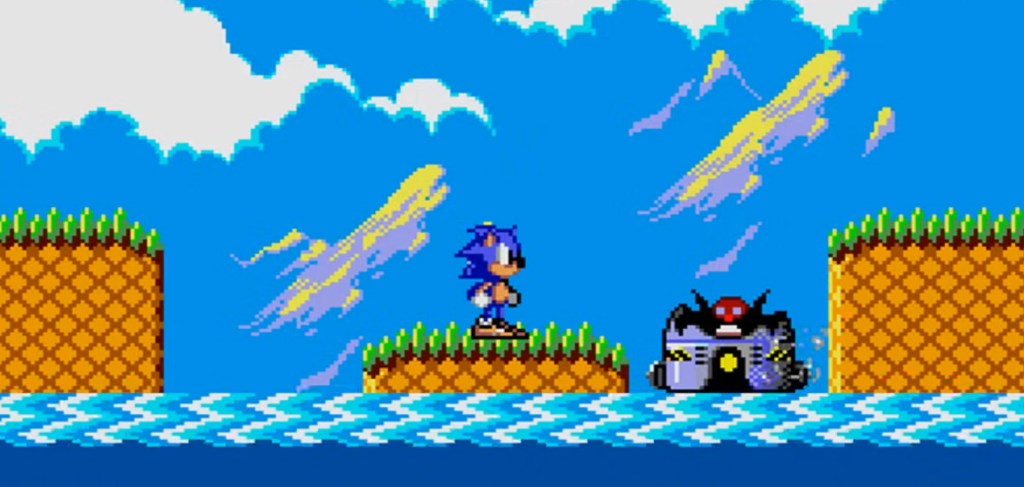
Sonic the Hedgehog (1991)
The Master System version of Sonic was like a passing of the torch between consoles. Sega had a real identity with their new mascot and it also gave the Genesis its own bragging rights through him. The Genesis had “Blast Processing,” which Nintendidn’t. They couldn’t make a game like Sonic if they tried! So anyway, this other 8-bit console was going to have a Sonic game.
Obviously, it doesn’t hold a candle to the original, but it still does an awful lot. Developed by Ancient, it didn’t try to be an attempt at a duplicate game. Hell, it even has an auto-scrolling level mixed in there, which feels weird. It still contains great visuals, gameplay, and sound, allowing North America’s final Master System game to burn out brightly.
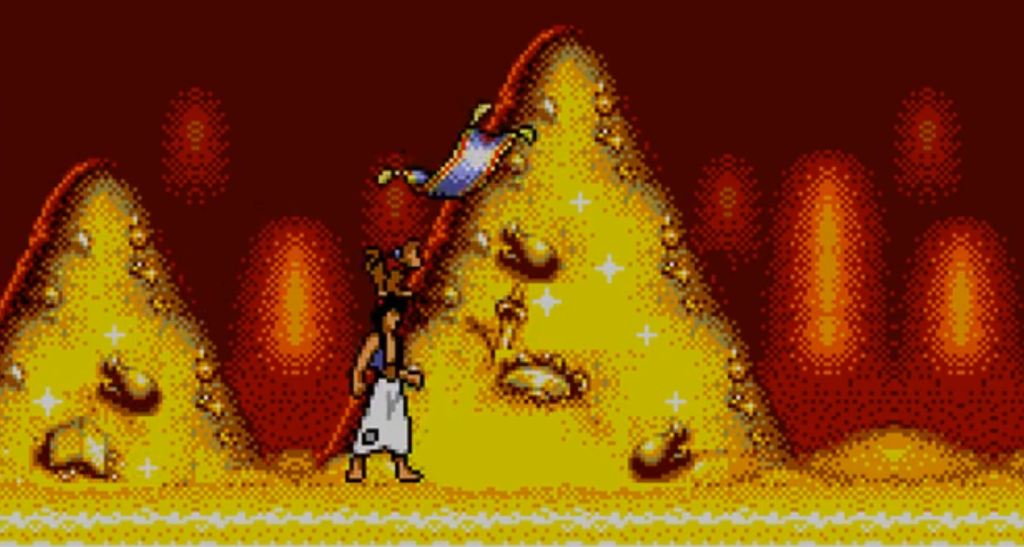
Aladdin (1994)
Japan and North America moved on, but the Master System kept kicking elsewhere. In PAL regions, Sega’s console had a strong enough market share that they kept coming out with more games. A lot of games you wouldn’t expect to see on the Master System were ported in the European market. Sonic the Hedgehog 2, the first two Streets of Rage games, the first two Mortal Kombat games, some Simpsons titles, various games based on the RoboCop and Terminator franchises (including the crossover), and so on. Due to the Game Gear hardware being incredibly comparable to Master System, a lot of these versions of the games were nearly identical.
Aladdin is the one that truly stands out. In a time when the Genesis version made waves with its excellent animation and the SNES version had some killer Capcom platforming, the Master System version was still able to hold its own. Colorful characters, better animation than what you’d expect, and a decent in-game retelling of the movie’s plot make it a true diamond in the rough. See what I did there?
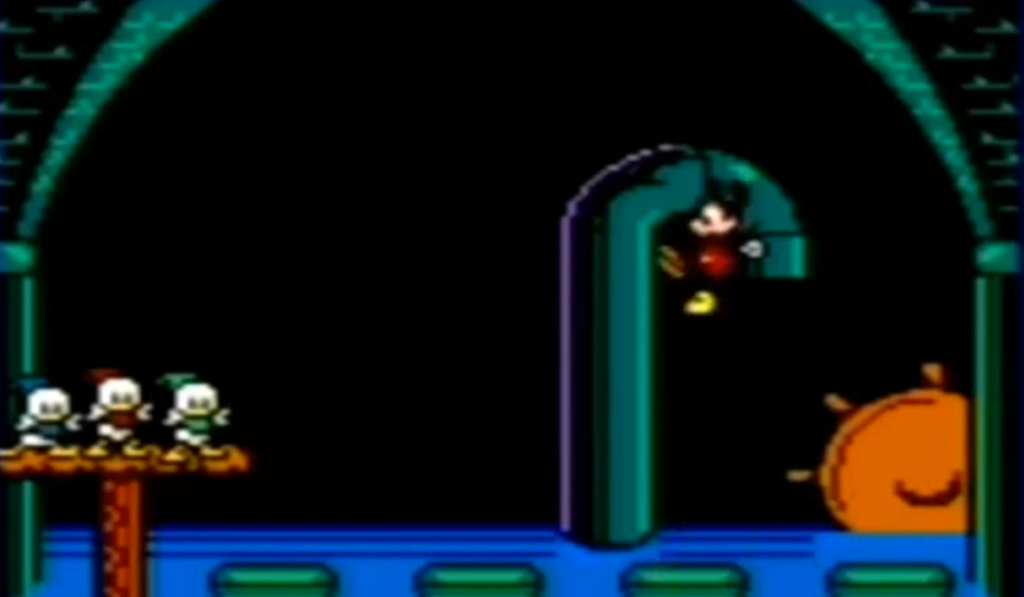
Mickey’s Ultimate Challenge (1998)
Once the PAL well dried out, there was still a sliver of life in the Master System. Brazil was a haven for the console, like Hasselhoff in Germany or Spinal Tap in Japan. The company TecToy produced a bunch of these very late ports, including takes on Street Fighter II: Champion Edition, Earthworm Jim, Mortal Kombat 3, and Virtua Fighter Animation. Yes, this thing lasted long enough that there was a Virtua Fighter game on it.
The final game released was Mickey’s Ultimate Challenge: a game that initially came out in various forms originally back in 1994. It was basically just the Game Gear version on a bigger screen. There’s not much to this title that sees you play as fantasy versions of Mickey and Minnie and solve different types of puzzles. Nothing groundbreaking or overly confusing, as it’s made for a younger crowd, but not the worst swansong for a 13-year-old console that had a hard time getting noticed.
